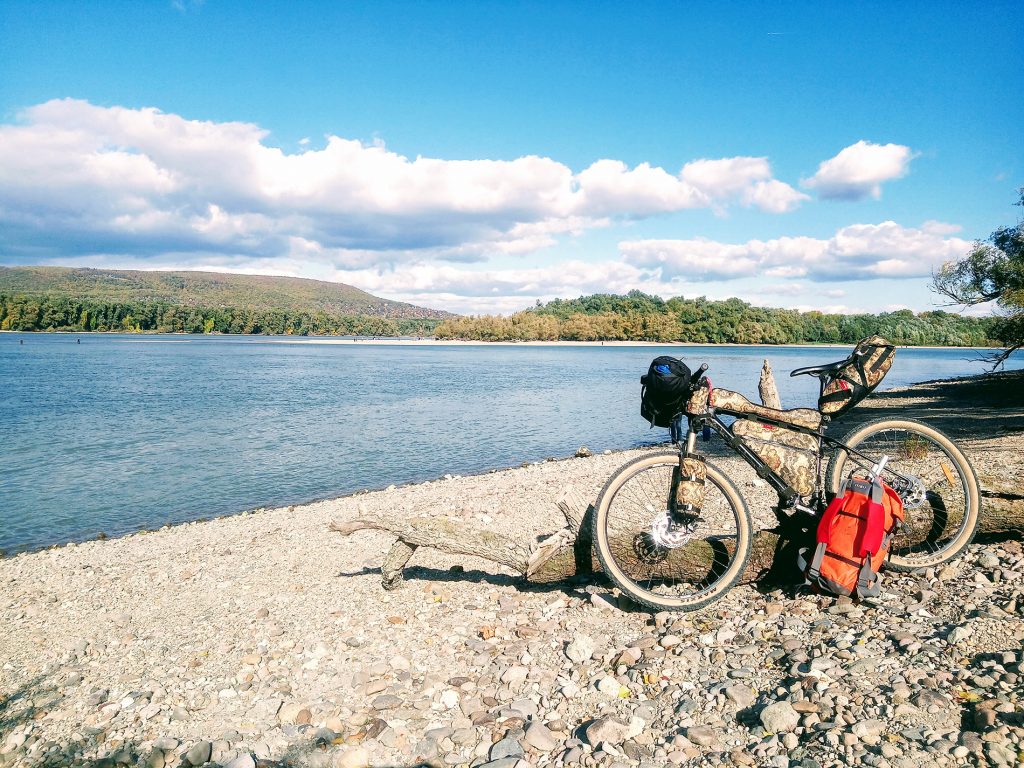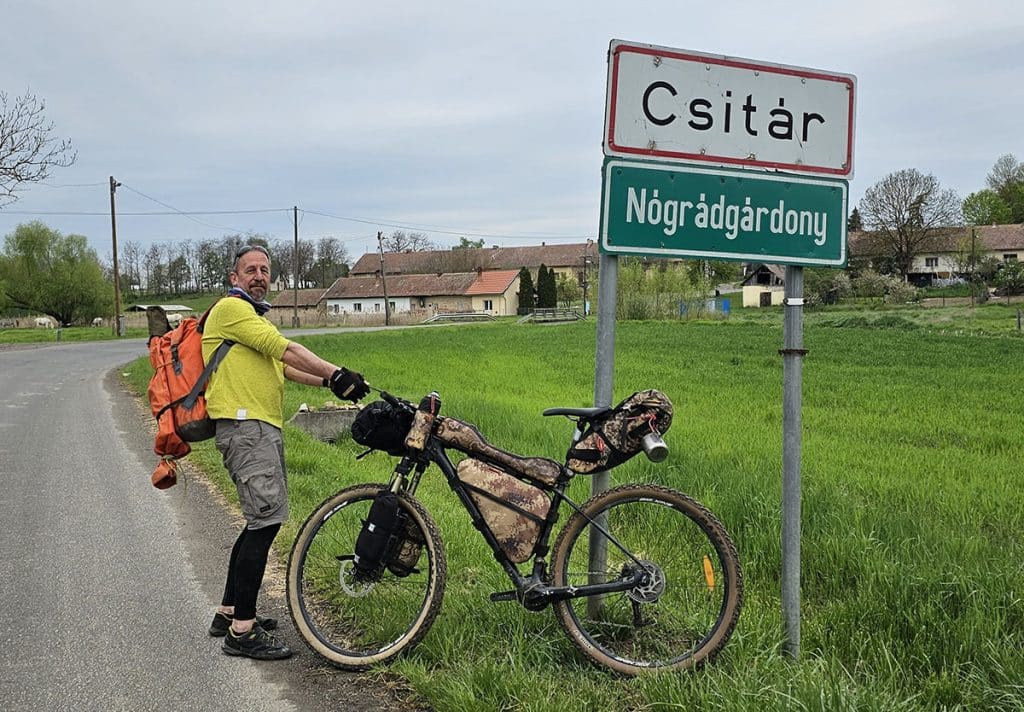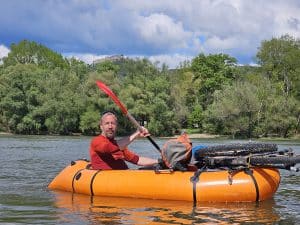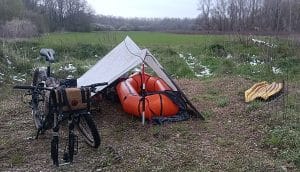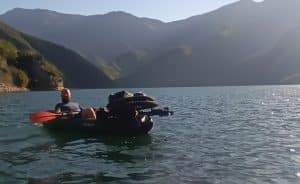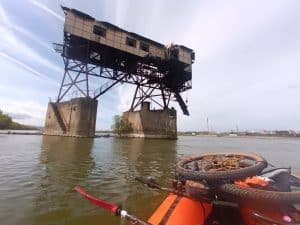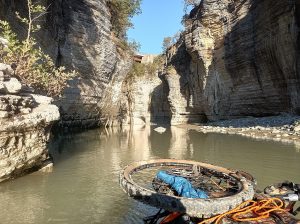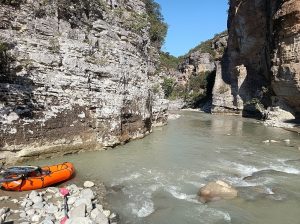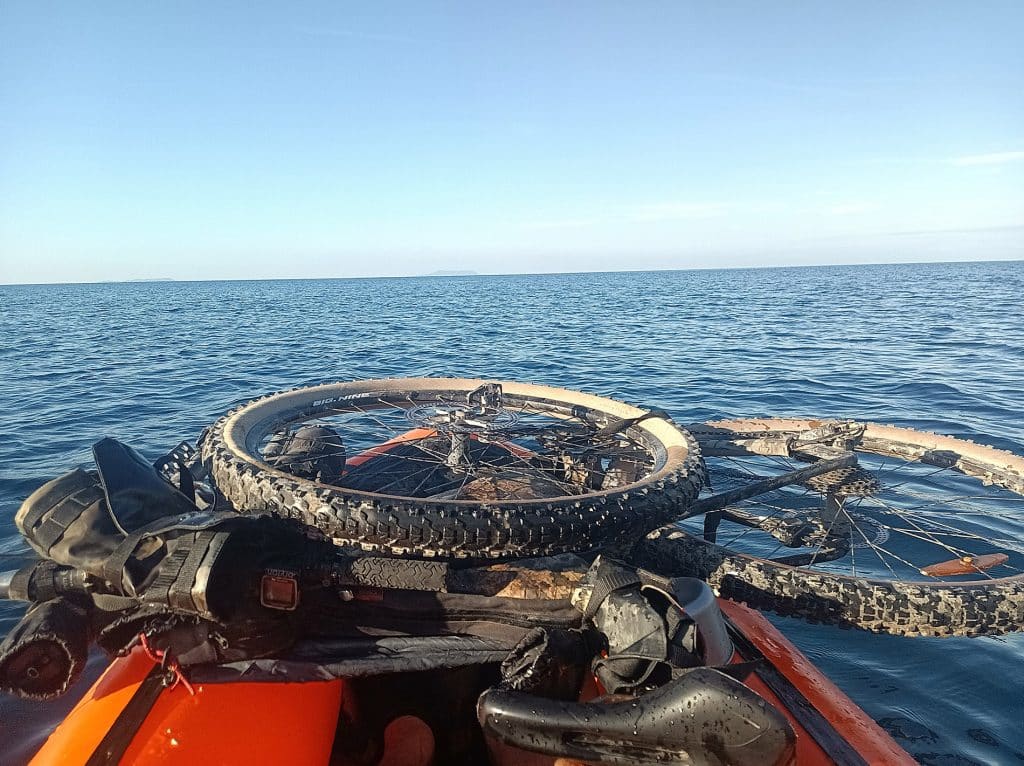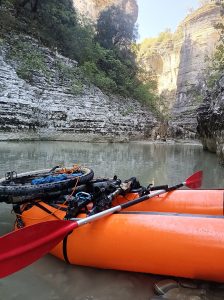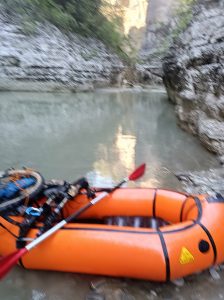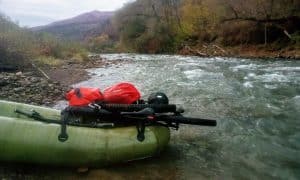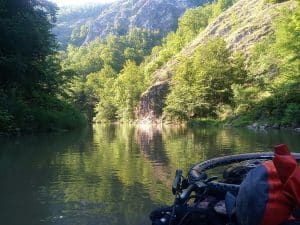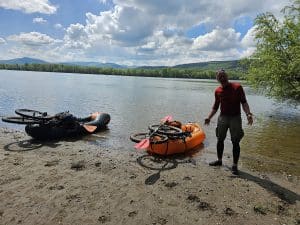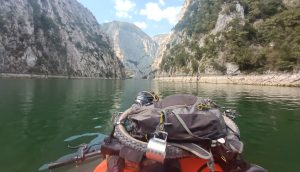Nincsenek termékek a kosárban.
You feel like you're so routine that you've really managed to keep the things you need to carry to a minimum, and you can leave for a couple of weeks with a packed bike. You tear through the single-track paths, sometimes the wheels don't even touch the ground. You climb up the mountain passes - with the bike in your hand - as if you had just popped into the corner pub for a couple of beers. Smile, joy, happiness.
They say you haven't tried everything yet! Add a paddle and take a boat with you. This is guaranteed to wipe the smile off your face - but only temporarily, only to be replaced by a wide grin. It's worth it just to be able to take such silly photos:
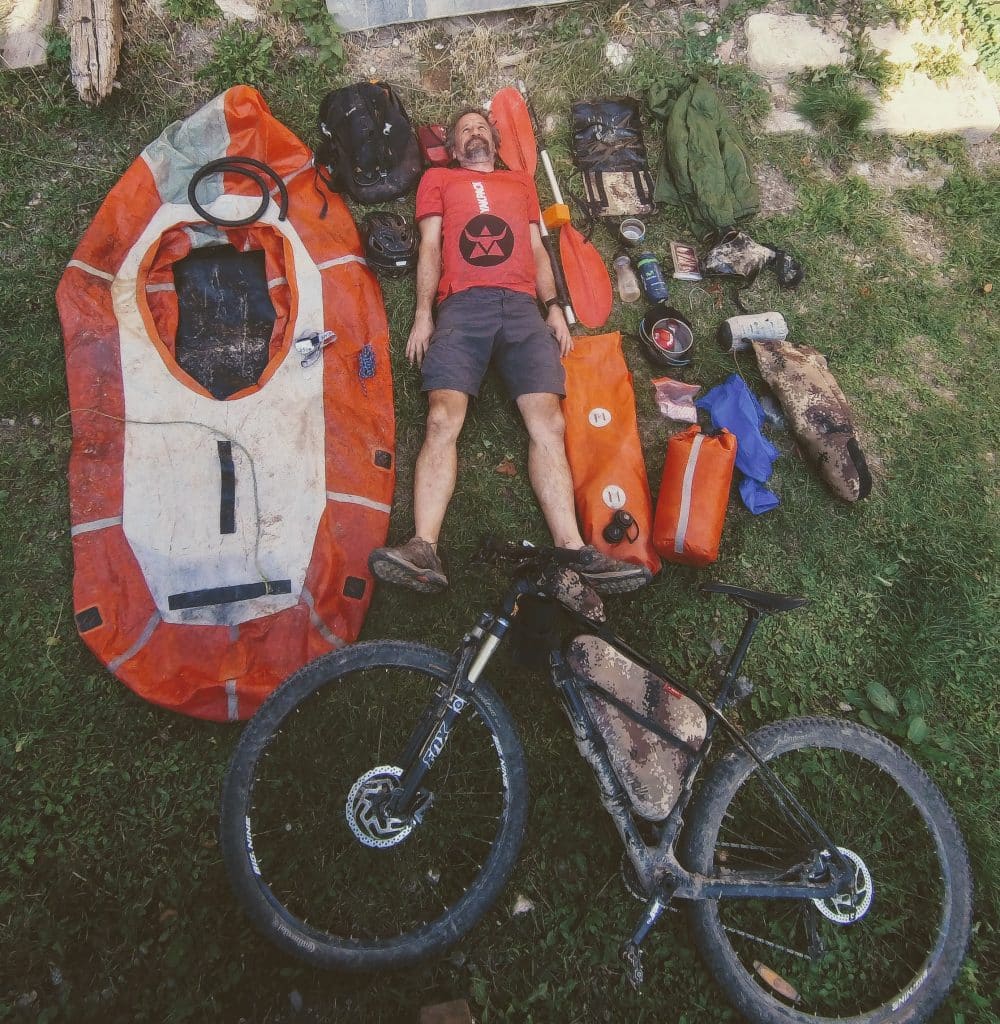
The stuff you've had with you until now
I won't go into detail about this now, it was about that How to pack in a post
Short:
- tools and spare parts
- lighting and electrical gadgets
- the wardrobe
- your bedroom (bag, waist bag, tarpaulin)
- the kitchen (gas cooker, dishes, dried food, water)
- cleaning, eü package
And what you haven't even heard of until now
I will detail this below
Short:
- a boat (packraft)
- a two-pronged oar
- clothing
- air bag
- repair kit
- life jacket
- rope
How does this all work?
The packraft
The point is the ultra-light boat, which is big enough to fit the bicycle with the wheels removed. If you want to get one, look for packraft. It is important that the material is TPU nylon and not PVC. Their weight does not really exceed 3 kg. Packrafts have an air chamber. You will find many different types. When choosing, the spray deck can be a consideration, which makes it suitable for white water paddling, the first crashing wave does not end up at the bottom of the boat. A zippered boat hull can be important, because this way you can pack all your junk and they won't be in the way, and the center of gravity is also lower - not to mention, there won't be any water inside the boat hull in the lucky case.
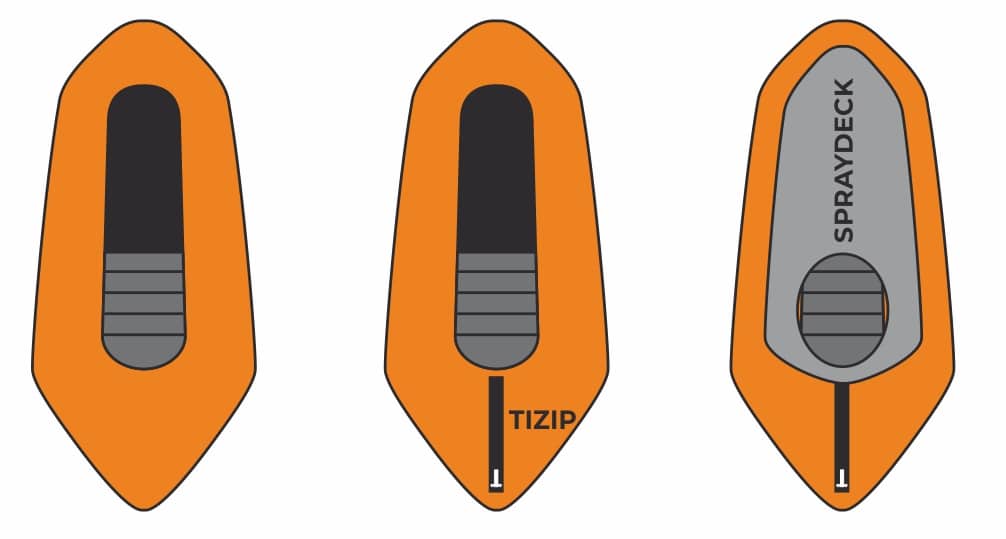
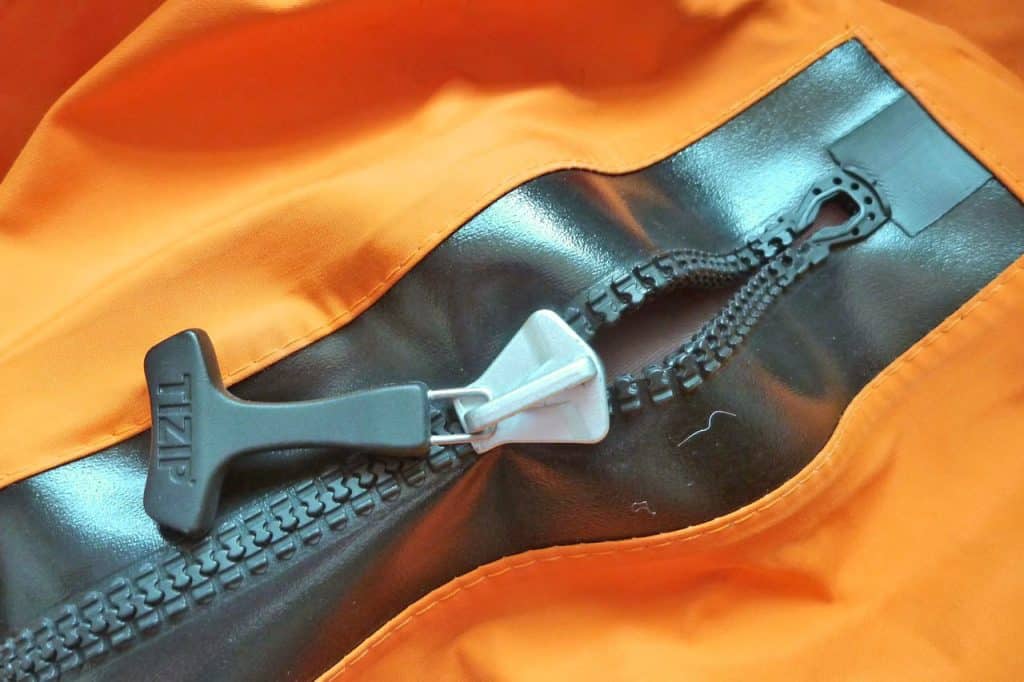
These boats are wide, very heavy duty and stable. This is an advantage in fast-flowing waters, but at the same time it can be a struggle against the tide, or in slow currents and strong headwinds. It doesn't glide any better than a soap dish. If you row properly, you might be able to cover 4-5 kilometers per hour.
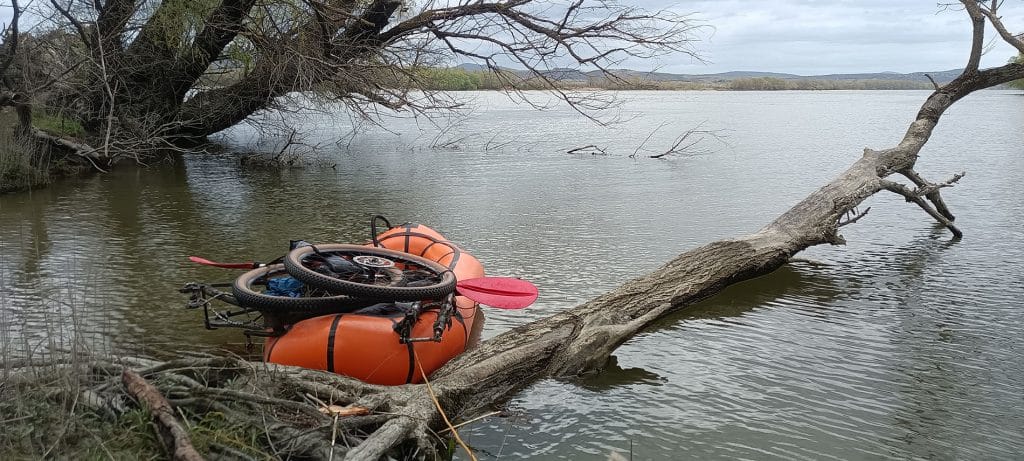
The oar
A smooth, two-feather paddle. The most important thing is that you can cut it into at least 4 pieces. Of course, it doesn't hurt if it's not heavier than the boat. You can choose from countless price categories, the ten thousand HUF aluminum handle will do the same. It doesn't hurt to make sure that it is long enough, since the boat is about the width of an average kayak. its double. And what's important: two water diversion rings, if you don't want a large amount of water to enter the boat every time you shovel.
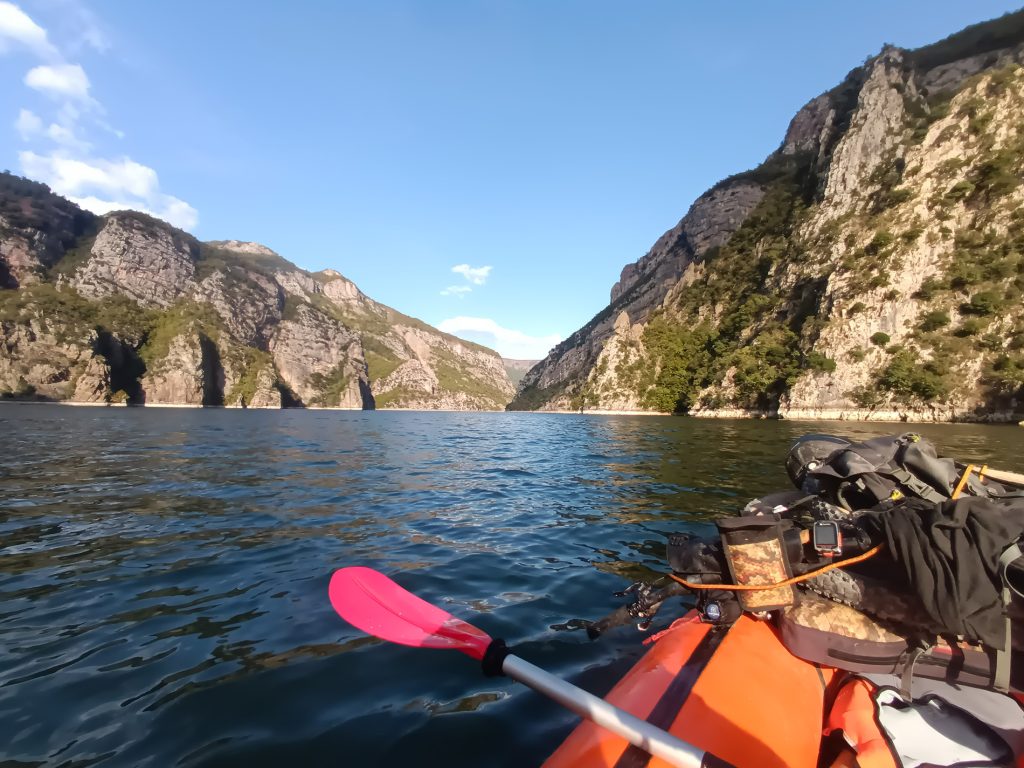
The clothing
It mostly depends on the season. A neoprene shoe is definitely good if you don't want to get your bicaj pike wet. A neoprene wetsuit with a bridle also comes in handy when the weather is a little cooler, and even a little in winter. For whitewater rafting in cold weather, a drysuit would be the most ideal, but an asset. I usually solve this by wearing a neoprene suit, rain pants, and a rain jacket. At least it protects against splashing water. If you get into the water, you try to get to the shore as soon as possible anyway, that's when neoprene comes in handy. It's not good to worry about getting cold, if you're frozen and your limbs start to tremble, it's better to get rid of the wet bundle and hide in the sleeping bag until your temperature is restored. If you feel that your legs are aching, it is also worth making a short stop, getting out, and moving around a bit.
Have a life jacket with you! In many cases, it can be useful if you get into the water, otherwise it is a mandatory accessory, the osprey can check it. The most practical is the inflatable one, because it fits in a small space.
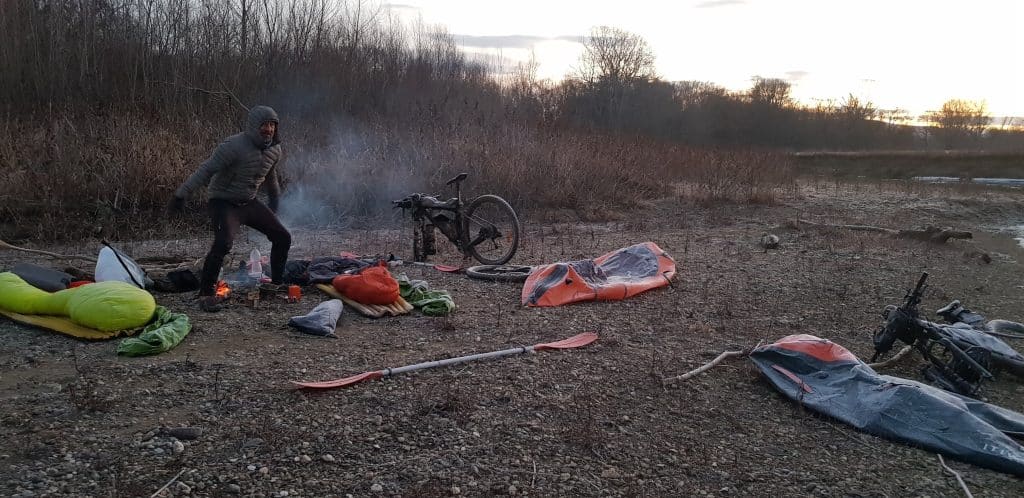
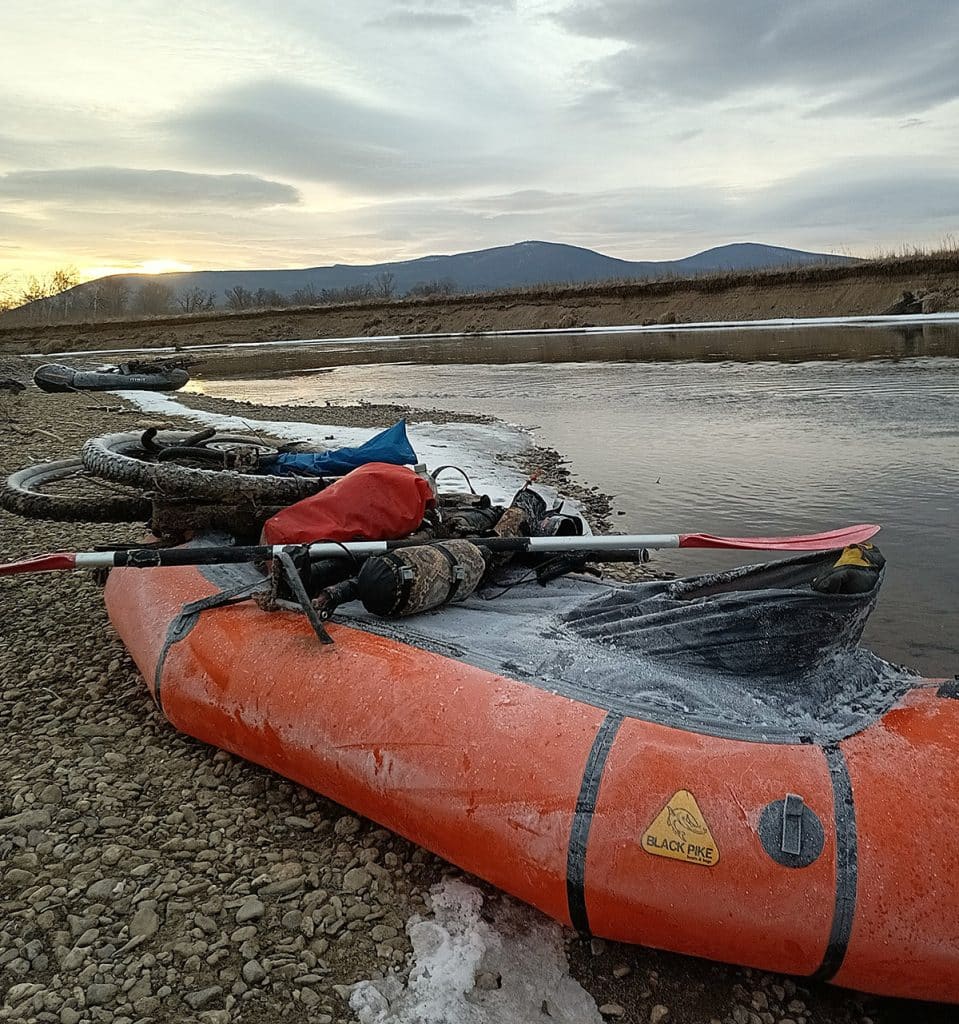
The others
The easiest way to inflate the boat is with a light bag, which is closed at one end and ends with a valve, and the other is open. You wind it on the boat's valve, swing it, then squeeze the air into the boat. When you have almost inflated it, you unroll it, fasten the boat's valve, and smoothly inflate it with a hose until it is tight. I also leave this hose inside when the boat is a bit windy somewhere. Obviously, I zip the stuff into the boat hull before inflating it. Therefore, when packing, think carefully about what you will only need for the final disembarkation. After inflating, I fasten the disassembled bicaj to the boat with straps, at least 2 points, preferably 3-4 points in rough water, so that it can't wander around too much. Don't forget to fasten the mooring rope as well, it's okay if it's at least 6-7 m long. An avalanche cord can also be used for the oar, so that you don't leave it behind.
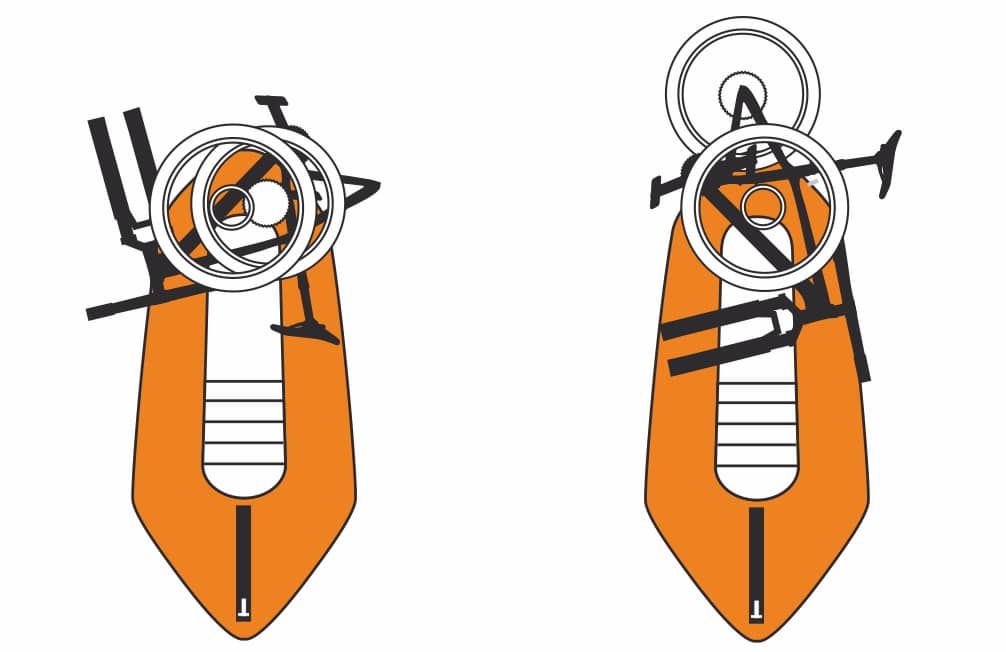
When packed together, all of this should fit into a 30-liter backpack, which doesn't hurt if it has comfortable, padded shoulders. The total weight can usually be kept between 6-8 kilos. The oars still stick out a bit, but this much discomfort fits.
If it all comes together like this, you won't want to hike any other way, and you'll have the boat with you even if you only have a chance to spend a few hours on the water.
